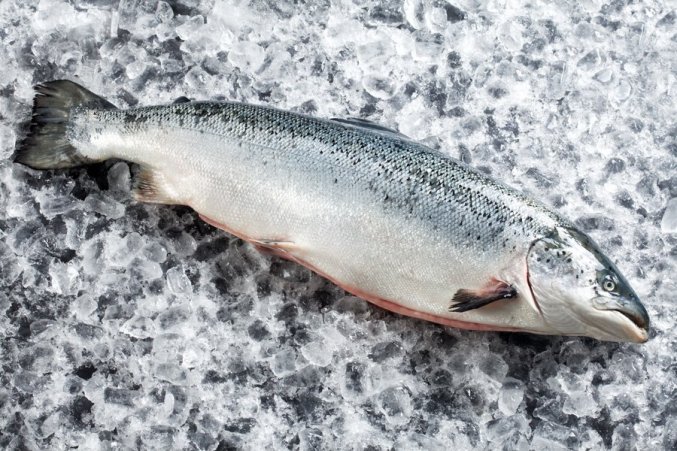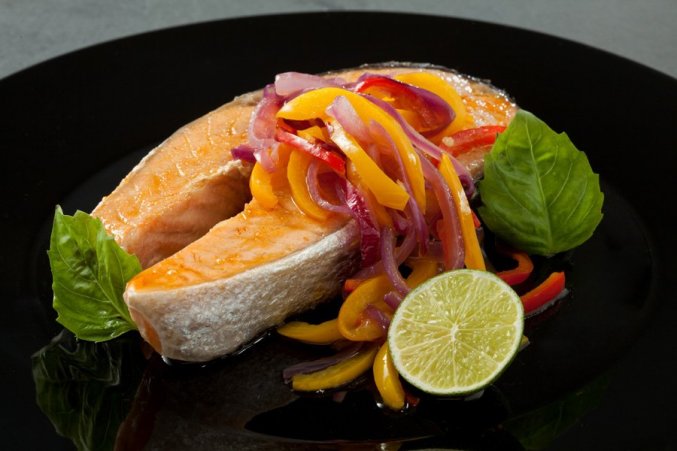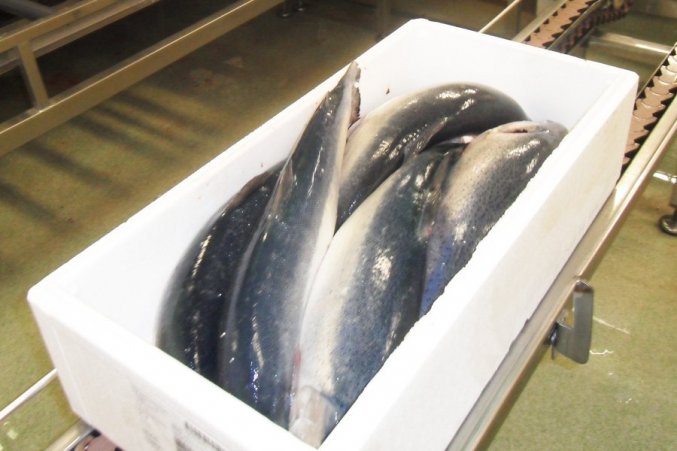Whole Fresh Salmon
It is a highly commercial fish type and farmed by many countries, Norway, Canada and Russia being in the first place. In natural environment, it is a fish type originated from Atlantic Ocean and it migrates to fresh waters before and after spawning, they return to the sea. They migrate to fresh waters again to spawn.
Its body is covered with silver bright scales and it can reach to 150 cm. They have delicious, specific red meat. Although it is a fatty fish type, they are beneficial against to cholesterol, it is completely heart-friendly and contain high amounts of Omega 3.
Product Description
| Product name | Whole Fresh Atlantic Salmon 20 kg |
| Latin name | Salmo salar |
| External barcode | - |
| Internal barcode | - |
| Size | 4-5 kg, 5-6 kg, 6-7 kg |
| Product description | After harvesting salmon is gutted with head and packed immediately, after that transport. |
| Freezing type | - |
| Packing type | 20 kg bulk |
| Ingredients | Whole salmon (%100) |
| Production type | Farmed √ / Catch (FAO : ) / Value added |
| Origin | Norway |
|
Units per package |
4-5: 4 pcs/20 kg 5-6: 3 pcs/20 kg 6-7: 2 pcs/20 kg |
| Glazing rate | - |
| Product type | Head on and gutted, skin on fresh salmon with superior quality |
| Broken pieces | 0 adet / 20 kg |
| Appearence | Specific reddish-orange meat, bright skin, no deformation of scales, specific appearence |
| Smell | Specific smell |
| Taste | Specific, not bitter or sour, natural taste |
| Texture | Strict, not dry |
|
Average weight |
4-5: 4,5 kg 5-6: 5,5 kg 6-7: 6,5 kg |
| Shelf life | After production date, first 15 days |
| Additives | No chemical |
| Outer package | Styropor box |
| Inner package | - |
|
Packing criteria |
The total migration value of components of plastic substances and materials to foodstuff, per square decimeter surface area of substance or material can not be more than 10 mgs. This value is defined as the limit of total migration of plastic substance and materials (mg/dm2). |
|
Storage conditions |
Should transport and storage at min +4°C. Transportation should be without contamination and complete with no break of cold chain. |
Nutrition facts
| Energy (kcal/100 g) | 206 |
| Fat (g/100 g) | 12 |
| Protein (g/100 g) | 22 |
| Cholesterol (mg/100g) | 63 |
| Na (mg/100g) | 61 |
| Carbonhydrate (mg/100g) | 0 |
| Vit A (%/100 g) | 1 |
| Vit C (%/100 g) | 6 |
| Ca (%/100 g) | 1 |
| Fe (%/100 g) | 2 |
| Omega 3 (g/100 g) | 2,26 |
Chemical Parameters
| Hg (mg/kg) | 0,5 |
| Cd (mg/kg) | 0,05 |
| Pb (mg/kg wet weight) | 0,3 |
| Total max dioxins (pg/g wet weight) |
3,5 |
| Total max dioxins and dioxin like PCBs (pg/g wet weight) |
6,5 |
| Total PCB28, PCB52, PCB101, PCB138, PCB153 and PCB180 (ng/g wet weight) |
75 |
Microbiological Parameters
| Histamin (mg/kg) | 100-200 |
| Salmonella spp(g-ml) | - |
| Listeria monocytogenes (g-ml) | - |
Legal Criteria
| GKGM Regulation on water intended for human consumption |
| GKGM Regulation on microbiological criteria |
| GKGM Regulation on contaminants |
| GKGM Regulation on labelling |
| GKGM Regulation on packaging waste control |
| GKGM Statement of plastic materials in contact with foodstuffs |
| Turkish Food Codex Regulation |
Spawning
| Jan | Feb | Mar | Apr | May | Jun | Jul | Aug | Sep | Oct | Nov | Dec |
| X | X | X | X | X | X | X | X | X | X | X | X |






